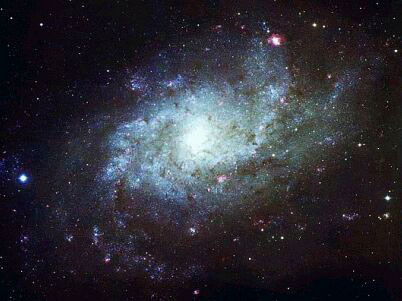Observation data
Type: SBc (barred spiral galaxy)
Diameter: 100,000 light years
Thickness: 1,000 light years
Volume: 7.85 trillion cubic light years
Number of stars: 200–400 billion
Oldest known star: 13.2 billion years
Mass: 1.4×1042 kg
Sun’s distance to Galactic Center: 26,400±1,600 light years
Sun’s galactic rotation period: 250 million years (negative rotation)
Spiral pattern rotation period: 50 million years
Bar pattern rotation period: 15 to 18 million years
Speed relative to CMB rest frame: 552 km/s
Type: SBc (barred spiral galaxy)
Diameter: 100,000 light years
Thickness: 1,000 light years
Volume: 7.85 trillion cubic light years
Number of stars: 200–400 billion
Oldest known star: 13.2 billion years
Mass: 1.4×1042 kg
Sun’s distance to Galactic Center: 26,400±1,600 light years
Sun’s galactic rotation period: 250 million years (negative rotation)
Spiral pattern rotation period: 50 million years
Bar pattern rotation period: 15 to 18 million years
Speed relative to CMB rest frame: 552 km/s
The Milky Way is the galaxy that contains the Solar System. This name derives from its appearance as a dim un-resolved “milky” glowing band arching across the night sky. The term “Milky Way” is a translation of the Latin for “milky road”, Via Lactea, in turn derived from the Greek kyklos galaktikos or “milky circle”, “milk” also being the root for the Greek word for Galaxy.
The galaxy has this appearance because of the Earth’s position within the galactic plane around two thirds of the way out from the center, on the inner edge of the Orion–Cygnus Arm, with the majority of the galaxy being seen edge on. The concept of this faint band of light being made up of stars was proven in 1610 when Galileo Galilei used his telescope to resolve it into individual stars. In the 1920s observations by astronomer Edwin Hubble showed that the Milky Way was just one of around 200 billion galaxies in the observable universe.
The Milky Way is a barred spiral galaxy 100,000 light years in diameter containing 200–400 billion stars. Depending on its structure the entire galaxy has a rotational rate of 1 per 15 to 50 million years. The galaxy is also moving at a rate of552 to 630 km per second depending on the relative frame of reference. It is estimated to be about 13.2 billion years old, nearly as old as the Universe. The Milky Way is part of the Local Group of galaxies.

No comments:
Post a Comment